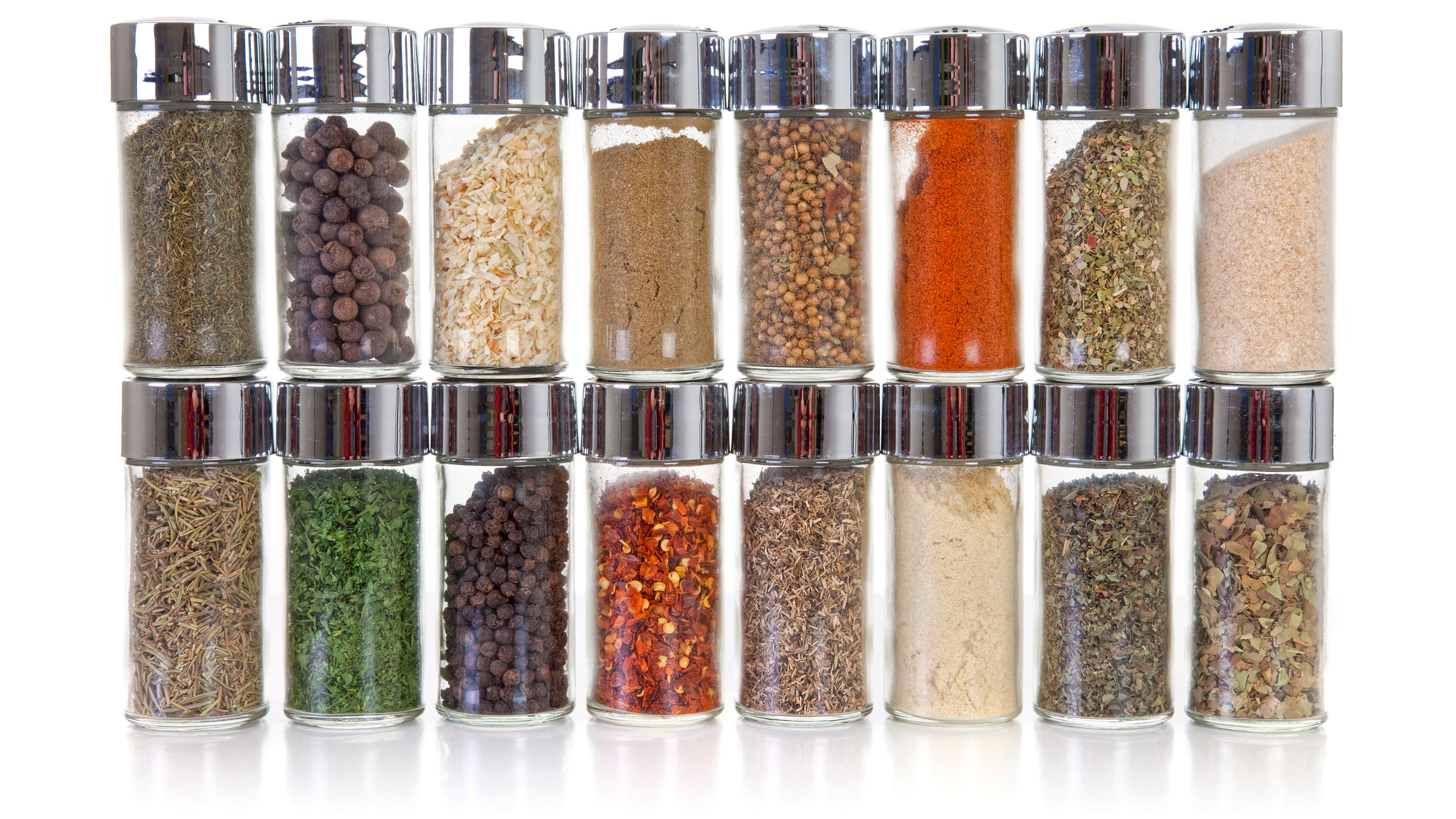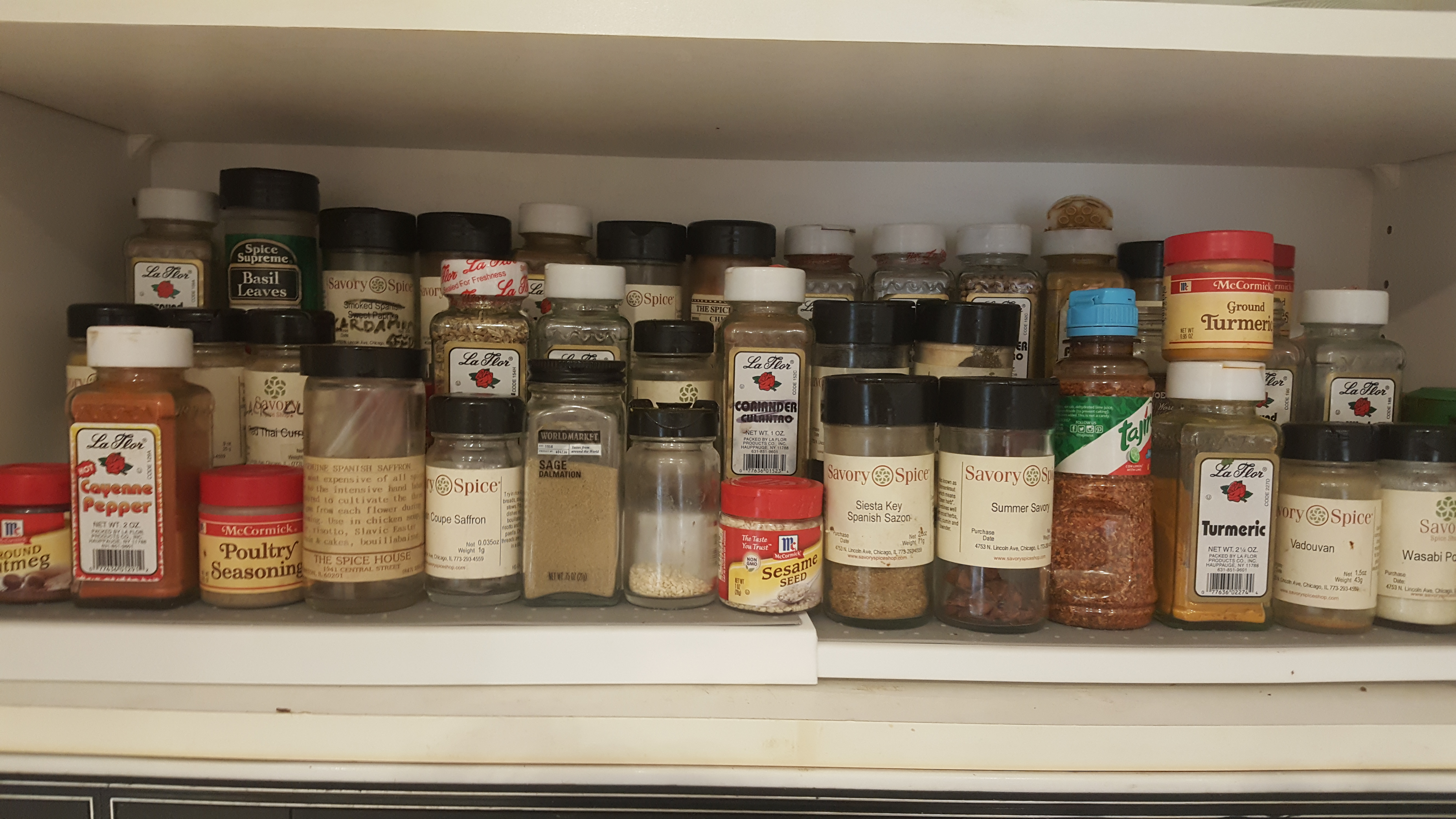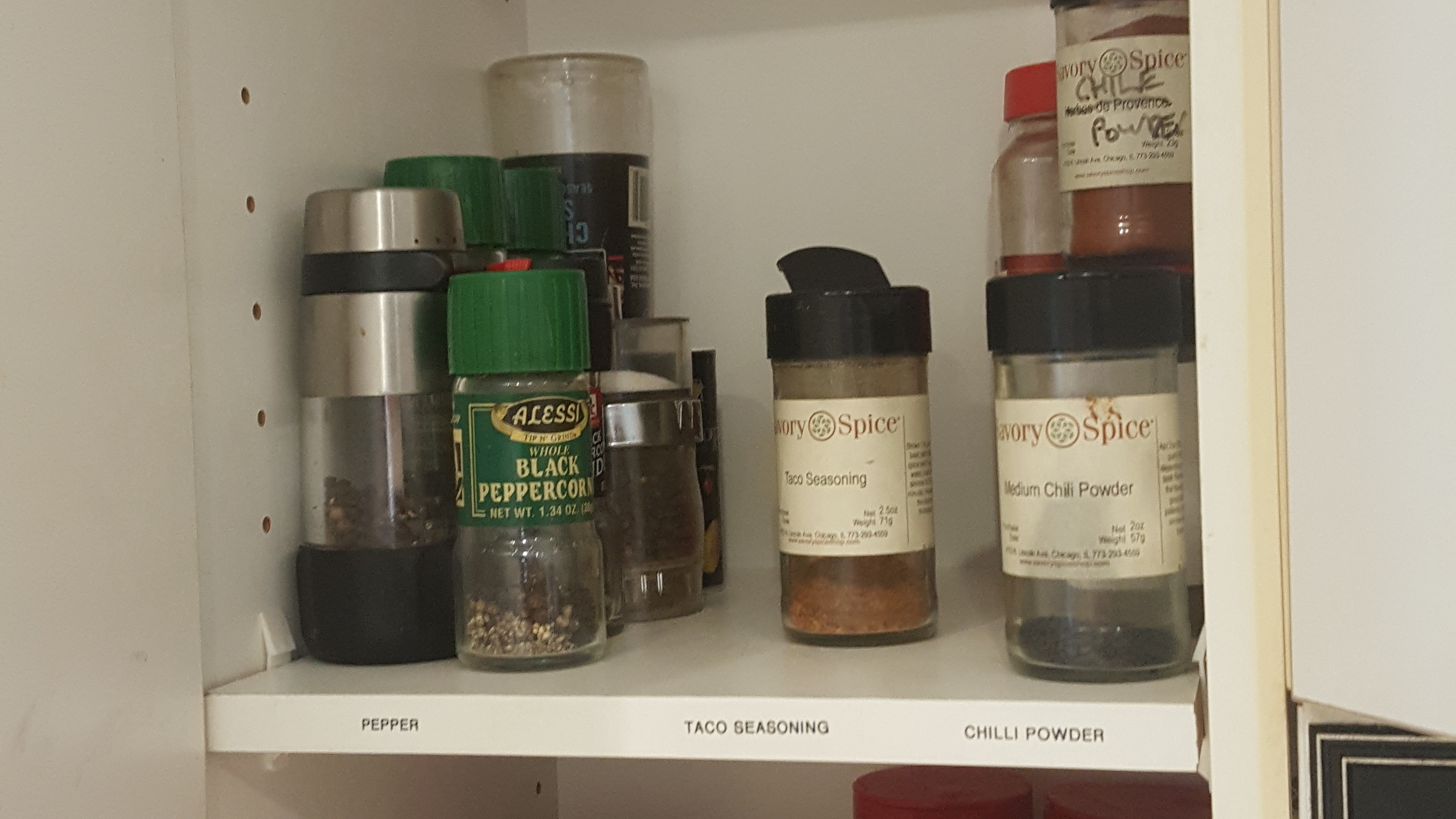How To Finally Organize Your Spices Like An Expert
I've mentioned before that my husband has gradually taken over our family kitchen, and as he's done so, he's developed a bit of a substance abuse problem—a spice-related substance abuse problem. He even has a frequent-buyer card at our neighborhood spice store, so that now when I wrestle through cabinets I may find five or six varieties of curry powder, or at least three bottles of paprika, smoked and otherwise. The spices are taking up an inordinate amount of space in our tiny kitchen; the spice rack on the wall was filled long ago, and we've now moved on to valuable cabinet space and the top of the fridge. I've isolated a small spot on a shelf for baking items like cinnamon, nutmeg, vanilla, and baking soda and powder, but that's as organized as we are right now.

To my mind, anyway. Whatshisname claims he has a system, but now I'm curious about what could possibly be in all of these dozens of bottles. It just bothers me that this much mania exists in my house. So, as I am wont to do, I turned to the experts to help me figure out the proper way spices should be stored. I asked a chef, a professional organizer, and a national spice store chain for their thoughts, and all of their somewhat surprising answers fell into similar pro tip categories.
First off, though Ariana Cuadra, senior marketing associate for the Denver-based chain of Savory Spice stores, explained: "The least convenient is the plastic bin filled with bags of spices. If you do have to go that route for space considerations we suggest cardboard dividers between each bag, like a file system. This will inhibit spices from exchanging flavors through the plastic. You want to keep spices stored somewhere cool, dark and dry; or, at the very least out of direct sunlight. The heat and the moisture can evaporate the flavorful essential oils within the spices, which is what gives them their beautiful flavor and aroma."
While some experts advise against storing above the stove, due to the increased heat in that area, unfortunately for some of us with limited space, we have to use that prime real estate for spice storage.
Tip #1: Go alphabetical
I was surprised to discover that all of my experts prioritized alphabetical organization over worrying about having your cinnamon too close to your curry. I suppose it would make it easy to figure where the oregano is versus the allspice. My new friend pastry chef Bo Durham, from Mindy's HotChocolate in Chicago, stated, "To put it simply and efficiently, in alphabetical order. As far as other spices and what not go, alphabetically will save time and struggle looking. I have my 'go to' spices towards the front and everything else in alpha order behind."
Organizer Erin Kelly, who runs her own personal organizing business called Arranged By Erin in the Chicago area, agreed. "I am an alphabetic gal. If you don't have a spice drawer in your kitchen (big custom ones), then use spice shelves in your cabinet." Ariana described, "In the Savory Spice Test Kitchen, we currently store our spices alphabetically and by general category such as salts and peppers, whole spices, etc."
Tip #2: Go thematic
To the second part of that statement, I could see where organizing by theme might be even more useful: Maybe spices by nationality like Italian, Mexican, and still keeping my baking stuff separate, even though I often like to toss cinnamon into chili, say, or use nutmeg in alfredo. Still you have to start somewhere, and Bo told me, "As far as keeping things organized by cuisine, that's up to you as the user. I keep all my baking stuff at home in a separate cabinet (sugars, flours, chocolates, extracts, spices, tools/piping tips and bags, etc). My hot sauces, oils, pan sprays, vinegars live in that cabinet just above the stove because I use them just frequently enough and that's just where they live. Work smarter not harder!" Ariana cautioned, "Certain things actually belong in the refrigerator, like poppy seeds which go bad quickly. Also, any of our cheese blends, tomato powder, and crushed aleppo chiles."
Tip #3: Put your favorites in easy reach
If you love garlic salt, though, it makes sense to have that in a space that's more reachable than the Zanzibar curry you use once a year. For example, Savory Spice's Ariana said that one of the store's managers arranges spices his spices at home "so that the most commonly-reached-for spices and seasonings get their own dedicated 'everyday' shelf on his family's spice rack." Bo chimed in, "I always leave salt and pepper on the counter because I always know I'm going to use them."
Tip #4: Weed out expired spices frequently
A portion of the massive spice section in my kitchen was so old, they weren't even usable any more. Spices lose their flavor after awhile, so it makes sense to rotate out those no-longer-flavorful substances, otherwise you're just sprinkling high-priced dust into your food. Bo told me: "One thing people tend to forget is that dried spices and herbs and even leaveners (baking powder/soda) have expiration dates. So when you decide to clean out that spice cabinet, pull everything out and look at dates. Six months to a year is a good window. If you have some random spices or seasonings from the last house you lived in years ago, get rid of it." However, he said there are a few things to hang onto: "Most extracts last a long time because they are alcohol-based. Only buy new when you've completely run out." To keep from falling into this spice overflow, Ariana suggested: "Buy only what you need! When you buy spices in smaller quantities, you can make sure the ingredients you're using are as fresh as possible, and you won't have an overflow of spices you don't use very often."
Tip #5: Love your label-maker
"To keep things extra organized and super fresh," stated Bo, "lots of homes and professional kitchens use the OXO brand pop containers (they have a little button on top with a rubber seal that keeps it air tight) and use a label-maker to keep it all fancy organized. Label and dating everything helps with organization and freshness. FIFO—first in, first out." According to Ariana, Savory Spice is about to release a a whole new organization system, building on its existing "text-based label system [that] opened our eyes to the possibilities for a better system that was more visually effective. We will soon be updating our whole line to 10 distinct categories that each have their own gorgeous color palette."
Label-maker advocate Erin eventually just came over to my house and as she always does, applied method to my madness. The alphabetical spices are now in a three-tiered series of spice steps over the oven. Larger bottles are together, as are salts and peppers, and I still have my baking shelf. Erin is one with her label-maker, so she set up helpful categories for sub-categories like chilis and vinegars. I feel a lot calmer walking into my kitchen now.
The trick of course, is to keep it that way. My husband is, let's say, an artistic domestic chef, so I don't think he is likely to keep the turmeric next to the thyme. I suspect that things will play out where the things he uses most often will be in easiest reach, maybe on the front tier of that spice shelf, with the rest alphabetical (hopefully) behind. And as long as we can keep his frequent spice shop purchases to a manageable level, we should at least be able to keep our spice collection in cabinets and away from the terrifying trenches of the top of the refrigerator.


